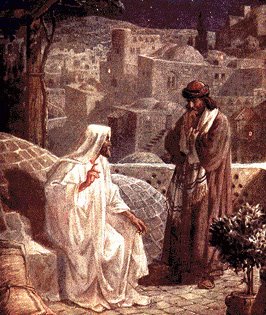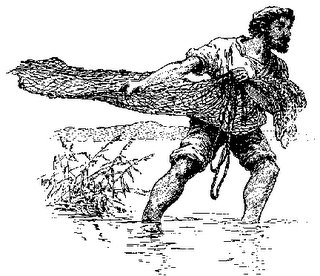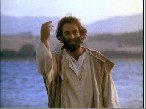
“If you knew the gift of God, and Who it is Who says to you, “Give me to drink,” you would have asked Him, and He would have given you living water.”
-John 4:10
Opening Thought:
Just Ask!
The logic is sound: it never hurts to ask. When you know you need something, know that you want it, speak up. The worst that can happen is be told “No”. Salvation is just that simple – in spite of how complicated our human mind wants to make it.
In John 3 & 4, we are privileged to listen in on two intimate conversations with the Master Evangelist, the Savior Himself. He reaches out to real, felt need of each listener, exposes the effect of sin and the reality of judgment, then points listening the heart to God’s outreached hand.
Indeed, Nicodemus and the Samaritan Woman were able to actually see the outstretched hand of Jesus, drawing them to Himself. A remarkable new revelation – the New Birth. A remarkable offer – forgiveness. A remarkable salvation offered by a remarkable Savior. And so simple – just ask.
The real question for both was, do you know who it is you are speaking with? If you just know – that settles it.
Study Notes
The Savior Leads
John 3 - Nicodemus
1. 3 1/2 Years of Ministry
- First few months of ministry -- ends with the Passover in John 2:13
- First Year -- ends with the second Passover of Jesus' public ministry, somewhere between John 4:35 and 5:1 (the feast in 5:1 likely being the feast of Tabernacles)
- Second Year -- ends with the Passover in John 6:4
- Third Year -- ends with the Passover in John 11:55, which culminates in the Upper Room
2. A Conversation with Religion - John 3:1-21 
- True Christianity is not religion. "Religion" is man's attempts to reach God - from exotic eastern religions, to the fascinating array of spiritual attempts of realization and fulfillment we have today, all are vain attempts to accomplish something only God Himself can do.
- "Christianity" in contrast is God's work. Through Jesus Christ, He has reached down to man and provided a way to span the gap caused by sin and reestablish an eternal relationship with God.
- Who is Nicodemus? A Jewish leader, one of the Pharisees that would be harassing Jesus, a member of the Sanhedrin that would end up condemning Jesus to death in three years.
- "Setting things in order" - Nicodemus' background meant that he would naturally want to think things through in a very logical sequence - every thing in its place. Jesus' response to Nicodemus starts with a startling statement that changes the rules. Then Jesus points the way to God through very sound, orderly thinking.
- Water and Spirit - See Ezekiel 36:24-27 for some background that could possibly come to Nicodemus' mind as Jesus spoke these words. Also possible is that Jesus is alluding to the "water" of natural birth, and then the necessary spiritual re-birth. Nicodemus wants to think literally and Jesus is leading to recognize the priority of spiritual faith.
- Almost everything covered... not quite. Jesus had broken down Nicodemus' religion to a point where it was clear what he needed to do. Then we have what clearly stands as the most well-known verse of all the Bible: "For God so loved the world...."
- Was Nicodemus saved when He left? Nicodemus heard Jesus' words, they made sense, but he very possibly left perplexed, needing the evaluate, turn things over in his thinking, maybe bounce some concepts off of friends. Later verses in John seem to indicate that Nicodemus did come to realize his need of the Savior -- see Jn. 7:50-52 and 19;39.
For further study:
1. Do you have a plan for how you would share salvation with someone? How to start, how to explain sin, etc. Try starting to write it, or get your notes out and prepare for the opportunity!
2. Is there a Nicodemus or Samaritan Woman in your sphere of influence that you should be praying for salvation?
3. John 5 is so important about the relationship of Jesus to His Father. Spend time this week meditating on this passage.







